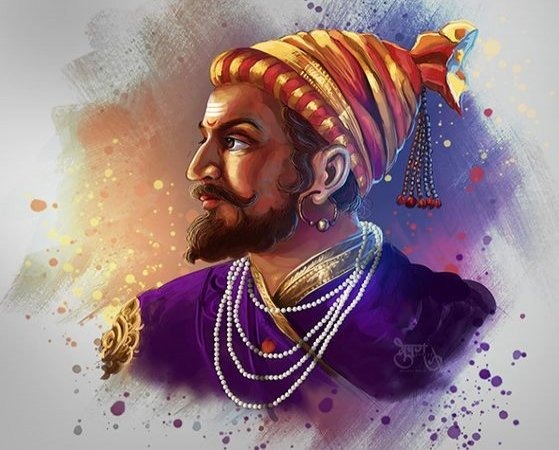Have you ever wondered who carried forward Chhatrapati Shivaji Maharaj’s legacy? Shivaji Maharaj, born in 1630, founded the Maratha Empire.
He was a brilliant strategist, a fearless warrior, and a just ruler. His governance, military tactics, and naval strength made him one of India’s greatest leaders.
After Shivaji died in 1680, his son, Sambhaji Maharaj, took over the throne. He was brave and determined but faced constant battles against the Mughal Empire.
Despite his resistance, he was captured and executed in 1689. His younger half-brother, Rajaram Maharaj, led the Marathas, continuing the fight for independence.
In this article, we will explore the lives of Shivaji Maharaj’s successors. We’ll discuss their struggles, achievements, and how they kept the Maratha Empire strong.
Check Out| Chhatrapati Shivaji Maharaj Jayanti 2025: Check Date, Holiday Status in India and Achievements
Chhatrapati Shivaji Maharaj: The Founder of the Maratha Empire

Source: Vajiram & Ravi
Shivaji Maharaj was born on February 19, 1630, at Shivneri Fort. His early training included reading, writing, horse riding, martial arts, and religious practice, fitting the expectations for a jagirdar's son.
Shivaji's education began at age seven, and he soon became skilled in reading and writing. He learnt warfare, riding horses, wrestling, and swordsmanship. By twelve, he was acquainted with different learning branches and arts.
Shivaji listened to recitations of the Hindu epics Ramayana and Mahabharata, which impressed upon him political and moral lessons.
Personal Life
Shivaji Maharaj married multiple times, having eight wives. Saibai was his first wife, whom he married on May 16, 1640. His other wives included Soyarabai, Putalabai, Sakvarbai Gaikwad, Kashibai Jadhav, Mohite, Sangunabai, and Palkar.
Saibai gave birth to his son Sambhaji and three daughters. Soyarabai bore him a son named Rajaram and a daughter, Deepabai. His height is believed to be around 5 feet 6 inches to 5 feet 8 inches, which was an average height for men of his time.
Military Career
Shivaji Maharaj started his military campaign at sixteen by capturing Torna Fort. He fought many battles against the Mughals and other foreign powers. Some of the great battles fought by Shivaji Maharaj include:
- The Battle of Kolhapur (1655)
- The Battle of Raigad (1656)
- The Battle of Pratapgad
- The Battle of Purandar
- The Battle of Sinhagad
- The Battle of Wadgaon
- The Battle of Takari
- The Siege of Jinji
- The Battle of Toppur
- The Battle of Vani-Dindori
Legacy
Shivaji Maharaj's reign was noted for his bravery, innovative military tactics, and progressive governance. He was crowned Chhatrapati in 1674 at Raigad Fort. Shivaji died on April 3, 1680. His concept of Hindavi Swarajya (Indian self-rule) continues to inspire future generations.
Chhatrapati Shivaji’s Successors: Who Took the Throne After Him?
Chhatrapati Shivaji, founder of the Maratha Empire, was crowned in 1674 and died in 16802. His immediate successor was his son Sambhaji, who ruled from 1681 to 1689. After Sambhaji's death, Rajaram, Shivaji's second son, became the next ruler.
1. Sambhaji (1680-1689)
Sambhaji Maharaj succeeded Shivaji and continued his father's expansionist policies. During his reign, he faced invasions from the Mughals led by Aurangzeb, as well as incursions from the Portuguese, British, and Janjira Siddhis. Sambhaji was captured by the Mughals in 1688 and executed on March 11, 1689, after refusing to convert to Islam.
2. Rajaram (1689-1700)
Following Sambhaji's death, Rajaram was crowned the next Maratha king. He faced persistent Mughal attacks and was forced to flee to Jinji in present-day Tamil Nadu in 1689, continuing the Maratha struggle from there until Jinji's fall in 1698. Rajaram died at Sinhagad Fort on March 2, 1700, fatigued from constant warfare.
3. Shivaji II and Tarabai
Rajaram was succeeded by his minor son, Shivaji II, with his mother Tarabai acting as regent. Tarabai, daughter of Hambirrao Mohite and wife of Rajaram, played a significant role in Maratha affairs.
4. Shahu
Shahu, also known as Chhatrapati Shahu Maharaj, was the next ruler after Shivaji II. It was during Shahu's reign that the Peshwas rose to power. Shahu ruled from 1708 to 1749 and made Satara his kingdom's official capital.
5. Chhatrapatis of Satara and Kolhapur
The Maratha Empire saw further successors, including those of Satara and Kolhapur. The Chhatrapatis of Satara include Shahu I, Rajaram II, Shahu II, Pratapsingh, and Shahaji.
The Chhatrapatis of Kolhapur include Shivaji II, Sambhaji II, Shivaji III, Sambhaji III, Shivaji IV, Shahaji I, Shivaji V, Rajaram II, Shivaji VI, Shahu IV, Rajaram III, Shivaji VII, and Shahaji II.
Summary of Chhatrapati Shivaji Maharaj’s Successors
- Chhatrapati Sambhaji Maharaj (1681–1689)—Son of Shivaji Maharaj, known for his bravery and resistance against the Mughals.
- Chhatrapati Rajaram Maharaj (1689–1700)—Half-brother of Sambhaji, led the Marathas during tough times.
- Chhatrapati Shivaji II (1714–1718)—Son of Rajaram Maharaj, briefly ruled before being dethroned.
- Chhatrapati Shahu Maharaj (1707–1749)—Grandson of Shivaji Maharaj, expanded the empire and strengthened Maratha rule.
- Chhatrapati Ramaraja (1749–1777)—continued to lead the Marathas, though under the influence of the Peshwas.
What's Next| Chhatrapati Shivaji Maharaj Jayanti 2025: Best Wishes, Quotes, Images, Messages to Share on Birth Anniversary
Comments
All Comments (0)
Join the conversation